Do you have a multimeter that isn’t reading current? If so, don’t worry! You’re not alone – this issue is actually quite common.
In this blog post, we’ll be going over the different solutions to fixing your problem so that you can get back to measuring what matters.
We can help you figure out how to use your multimeter correctly. Just follow the steps we give you and soon you will be able to take readings without making mistakes. Read our instructions carefully and soon you’ll know everything you need to know!
Why is My Multimeter Not Reading Current?
There are several possible explanations for why your multimeter is not reading current. Let’s look at the most common ones:
- You may have selected the wrong settings on your multimeter. Make sure you are using the correct setting, such as resistance or volts, and that you have set the range correctly.
- You may also be using the wrong type of probe for the job. Each multimeter comes with specific probes that are suitable for measuring current, and if you’re using the wrong one, your readings will be off.
- Your multimeter may have dead batteries or need recalibration. In this case, it may not be able to detect current at all.
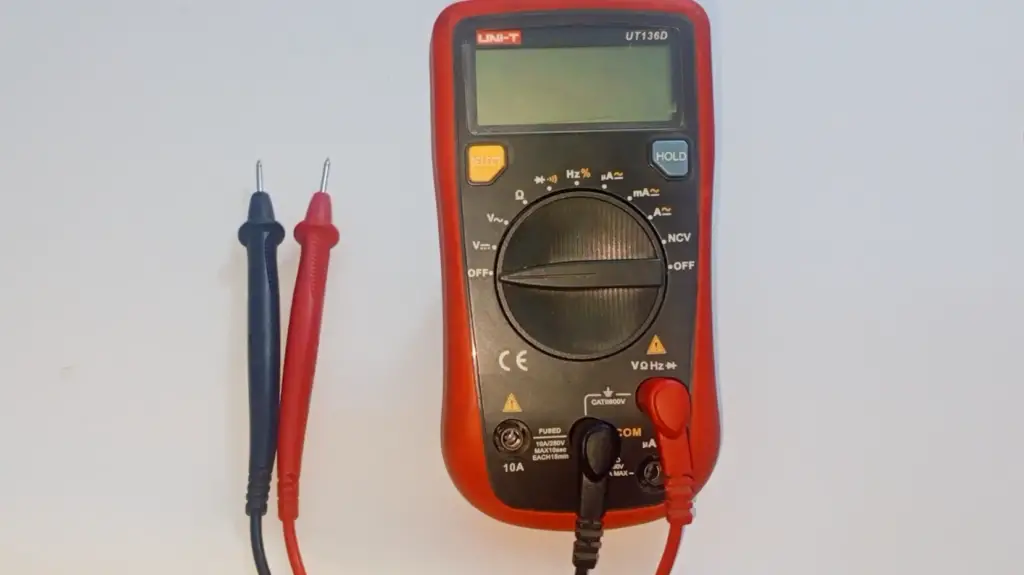
How Do You Reset a Multimeter?
If your multimeter is not reading current, you may need to reset it. Here’s how:
- Turn off the power and remove any connections from the leads or probes.
- Take out the batteries and wait for 10 minutes before reinserting them. If your multimeter uses rechargeable batteries, make sure they are fully charged.
- Turn the power back on and select the range you want to measure by using the selector knob.
- Connect the leads or probes to your multimeter and check if it’s now reading current correctly.
How Do I Know if My Multimeter Fuse is Blown?
If your multimeter is not working, the fuse could be broken. Take off the back cover of your multimeter and look for a small round thing near one of the terminals. If you see dark spots or burnt marks around it, the fuse has probably blown.
How Do I Keep My Multimeter Reading Wrong?
To make sure your multimeter readings are accurate, follow these tips:
- Make sure the leads and probes you’re using are in good condition. Damaged or frayed wires could lead to inaccurate readings.
- Choose the right settings for the job – if you select a range that’s too high or low, you won’t get an accurate reading.
- Calibrate your multimeter regularly to make sure it’s giving the right readings.
- Keep your multimeter away from sources of interference, such as power lines or mobile phones, which could lead to inaccurate readings.
- Always wear eye protection when using a multimeter.
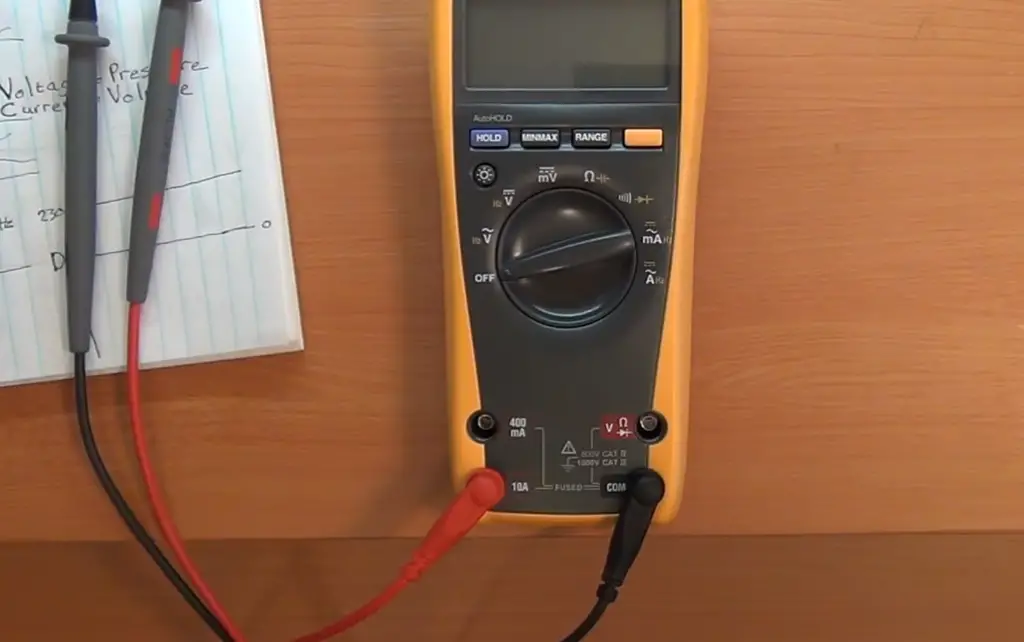
Can You Ruin a Multimeter?
Yes, you can break a multimeter if you don’t use it right.
Some kinds of multimeters cannot handle high currents or voltages so make sure to read the instructions before using them. Wear your safety glasses when using a multimeter to avoid any accidents.
How Do You Fix a Blown Multimeter?
If your multimeter won’t work, you need to change the fuse. First, turn off the power and unplug any wires. Look for a small round thing near one of the terminals. Take it out with pliers if needed.
Buy a new fuse that is the same size and rating as the old one. Put in the new fuse and put your multimeter back together again. Now turn on the power and your multimeter should work again!
Why Does My Multimeter Beep?
Most multimeters have a beeping option, which is used to help you make accurate readings. When the beep is turned on, it will alert you when your reading reaches the maximum or minimum value of the range you’ve selected.
This helps you avoid making mistakes and ensures that all your readings are accurate.
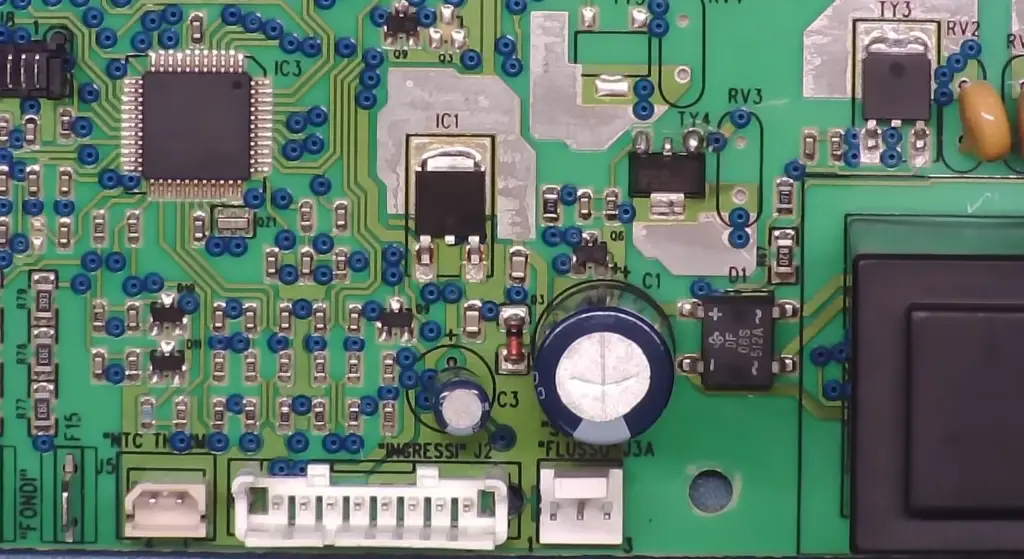
Why Do Multimeters Have Fuses?
Multimeters have fuses for two reasons:
- Protect the multimeter from damage due to high current or voltage.
- Protect you from electric shock.
Fuses break before the higher currents can reach you, so if your multimeter has a blown fuse it’s important to change it as soon as possible.
What Type of Fuse Does a Multimeter Use?
Your multimeter needs a special kind of fuse. It must match the current or voltage rating of your model.
You can buy it at a store that sells electronics, or online. Check the specifications of your multimeter first so you get the right size and type of fuse for your device.
How Do I Replace a Fuse with a Multimeter?
To replace the fuse in your multimeter, turn off the electricity and unplug anything connected. Open up the device and look for a small round thing near one of the wires. Take it out with pliers if needed.
Buy a new fuse that is the same size as the old one. Put in the new fuse and put your multimeter back together again. Then turn on the power again. Your multimeter should work now!

What Action Must be Taken to Turn the Metre on?
To turn on the multimeter, press and hold the “On/Off” switch for about one second. This will start up your metre and allow you to select a range setting. You can then use the dials or buttons to adjust the settings of your multimeter and take readings.
Make sure that you always wear eye protection when using a multimeter, as the electric current can cause serious injury.
Why Does My Multimeter Read 1 for Voltage?
If your multimeter reads 1 for voltage, it means you chose the wrong range. People often choose AC instead of DC. Check the range setting before taking a reading. Also, make sure all wires connected to the multimeter are tight and there is no outside noise.
What Causes Phantom Voltage?
Phantom voltage is caused when the multimeter has a defective diode. This usually happens due to bad internal insulation or faulty wiring.
Replace the diode or get it repaired and then check if your readings are correct. If the phantom voltage persists, it might be time to replace your device altogether.
What Are the Symbols on a Multimeter?
The symbols on a multimeter help you use it. V stands for voltage, A is for current, Ω measures resistance and F measures capacitance. Knowing these symbols will help you get the right readings from the multimeter.
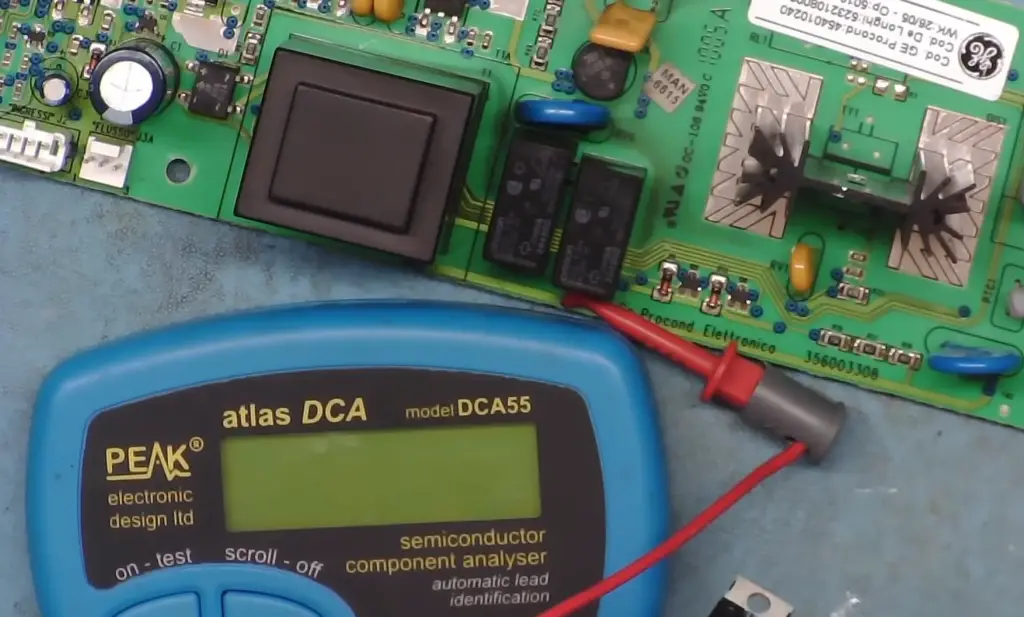
FAQ
Why is my multimeter not displaying current?
If your multimeter isn’t displaying current, it could be because the fuse is blown or the diode is defective.
Change the fuse and check that all wires are tight and there is no outside noise. If this fails to solve the problem, your device may need to be replaced.
What should I do if my multimeter is not reading correctly?
If your multimeter isn’t reading correctly, make sure the range settings are correct and all wires are securely connected.
It could also be due to a defective diode or fuse. If that’s the case, then you will need to replace them or get your device repaired.
How do you set a multimeter to read current?
When you want to measure current, choose the range that is right for what you need. For AC current, pick either 2A or 10A. For DC current, pick either 200mA or 10A.
Put the probes in and turn the dial on the display to read current. Now you can take readings of how much current there is!
How do I reset my multimeter?
To reset your multimeter, turn it off and unplug all connected wires. Wait for a few minutes before turning the power back on.
Then put in the probes and set the range to what you want to measure. Your multimeter should now be ready to take readings!
How do I know if my multimeter is broken?
If your multimeter is broken, it won’t show the right number or any number. It could be because the fuse is bad or the diode may not work.
Can a multimeter be repaired?
Yes, a multimeter can be repaired. If the fuse is blown or the diode is defective, then you will need to replace them with new ones or contact an authorised repair service to fix it. Make sure to buy quality components and follow safety guidelines when repairing your device.
What causes errors in the multimeter?
Errors in the multimeter can be caused by defective wiring or insulation, incorrect range setting and external noise. Check all the wires and make sure they are securely connected.
Also, check that the range setting is correct for what you need to measure. If there is still an error, it could be due to outside interference so turn off any other electronic devices in the area.
What safety measures should be taken when using a multimeter?
When using a multimeter, always make sure to wear protective gloves and eyewear as the electric current can cause serious injury.
Make sure that all wires are securely connected and there is no outside noise. Additionally, check the range setting before taking any readings to ensure accuracy.
How does a multimeter measure resistance?
A multimeter measures resistance by sending a small electric current through the device or circuit and then measuring the voltage across it. The larger the voltage, the higher the resistance.
This is an important measurement to take when troubleshooting electrical problems. Always remember to set your range correctly before taking readings.
How do I check for continuity with a multimeter?
To check for continuity with a multimeter, turn the dial to Ohms mode. Connect the probes of your device to each end of the circuit or wire you want to test. If there is no connection, then it will display “OL” or “open loop” on the display.
If there is a connection, then it will show a number. This number should be close to zero or no more than 1 ohm.
How do I test a diode with a multimeter?
To test a diode with your multimeter, set the range to Diode Test. Now connect the probes to each end of the diode and press the button on the device. If it’s working properly, you should get a reading between 0.4-0.7 volts. If you don’t get this reading, then your diode may be defective.
Why is my multimeter not reading current?
If your multimeter isn’t reading current, it could be due to a blown fuse or diode. Check the fuse and diode and replace them if necessary. It could also be a problem with the range setting or wiring.
Make sure that everything is securely connected and the range is set correctly. If the problem persists, then contact an authorised repair service to fix your device.
Does a multimeter need to be calibrated?
Yes, a multimeter should be calibrated regularly in order to ensure accuracy. If your readings are not accurate or there’s an error on the display, then it could be time for calibration.
You can either do it yourself with a calibration tool or take it to an authorized service centre for professional calibration.
Does a multimeter measure voltage?
Yes, a multimeter can measure voltage. Turn the range selector to “V” and connect the probes of your device to each end of the circuit or wire you want to test. The display will show the voltage across it.
Make sure that all wires are securely connected and no outside interference is present before taking any readings.
Do I need a separate multimeter to measure current?
No, you don’t need a separate multimeter to measure current. Most multimeters are capable of measuring current as well as voltage. Turn the range selector to “A” and connect the probes of your device to each end of the circuit or wire you want to test.
Does a multimeter measure temperature?
Yes, many modern multimeters can measure temperature as well. You will need to connect it to a thermocouple probe in order to measure the temperature.
Place the probe on the object you want to measure and then read the display on your multimeter. Make sure that the range settings are correct before taking any readings.
Can a multimeter be used to check batteries?
Yes, you can use a multimeter to check the voltage of a battery. Turn the range selector to “V” and connect the probes of your device to each end of the battery.
The display will show the voltage across it. Make sure that all connections are secure before taking any readings.
Can a multimeter test capacitors?
Yes, you can use a multimeter to check the capacitance of a capacitor. Turn the range selector to “Cap” and connect the probes of your device to each end of the capacitor. The display will show the capacitance across it. Make sure that all connections are secure before taking any readings.
With this guide, you should now be equipped with the knowledge and skills needed to troubleshoot any multimeter not reading current issues.
Which multimeter should I buy?
The type of multimeter you should buy depends on your specific needs and budget. There are a wide range of models available, from basic analog models to more advanced digital ones.
It’s important to consider factors such as cost, accuracy, durability, ease of use, and features before making a decision.
Which multimeter is the best?
The answer to this question depends on your specific needs and budget. Generally speaking, digital multimeters are more accurate and feature-rich than their analog counterparts. Some of the most popular models include Fluke’s 8808A, Tektronix’ DM3058E, and Extech’s EX505.
Which multimeter should I use for car diagnostics?
If you’re looking to do car diagnostics with a multimeter, then you should opt for a model that features an oscilloscope.
This will allow you to view more detailed information such as waveforms and other signals. Popular models include Fluke’s 8846A, Tektronix’ DM3058E, and Extech’s EX505.
Useful Video: HOW TO FIX A MULTIMETER THAT DOES NOT WORK (MY TOP 3 PROBLEMS & REPAIRS)
Conclusion
A multimeter is a tool to measure current, voltage and resistance. If it isn’t working properly, you can check the fuse and clean any dirty spots. If these steps don’t work, take the device to a repair service for help.
Whatever you choose, remember that current measurements are critical for safe electrical operation, so take your time and be careful to get accurate readings. Taking precautions and caring for your multimeter will ensure it offers reliable readings in all of your future projects.
Remember the tips in this blog post. This can help you fix your multimeter if it ever stops working. It does not have to be hard. Use these steps now and save them for later!
References
- https://finddiffer.com/why-is-my-multimeter-not-reading-current/





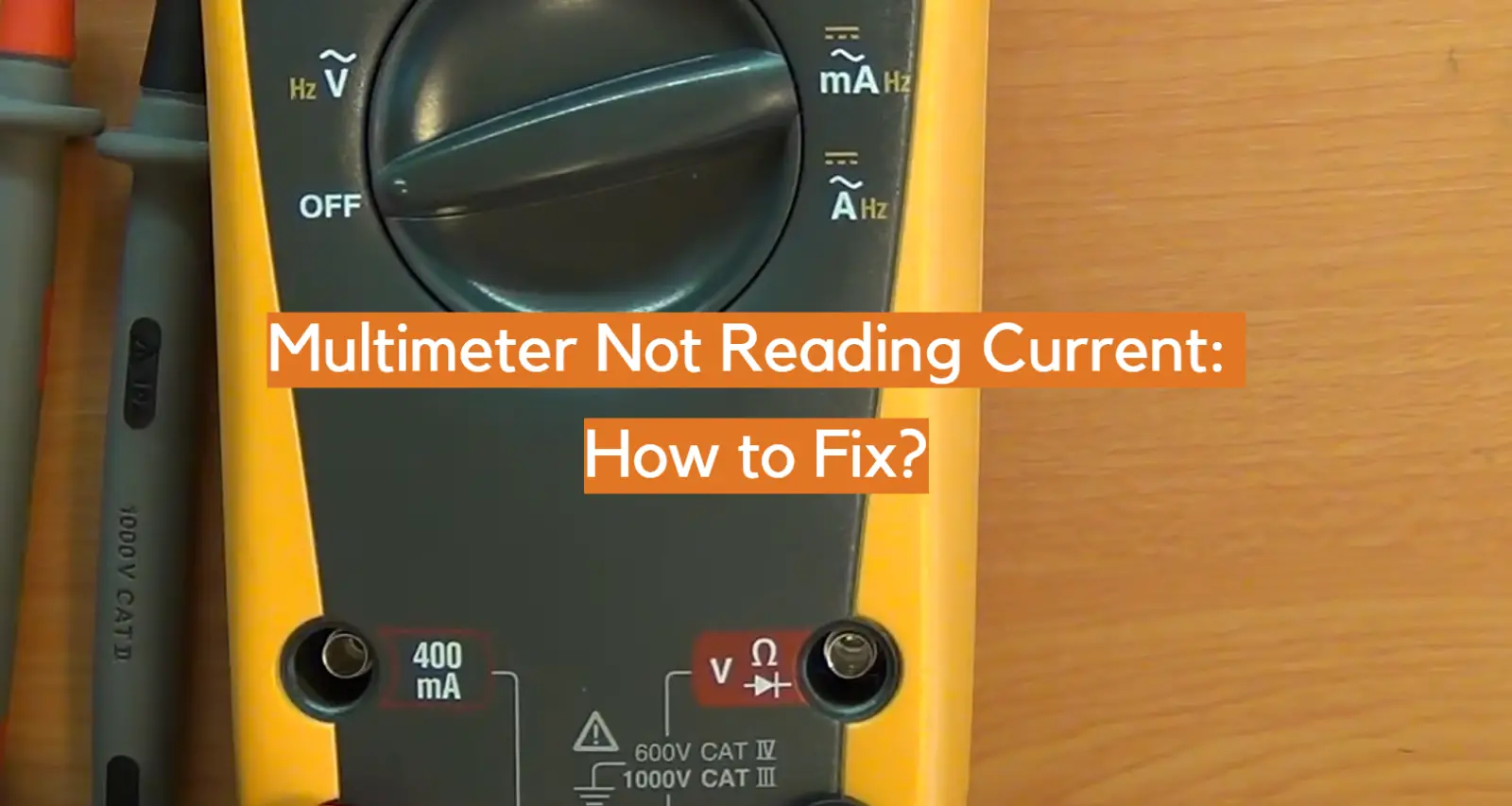








Leave a Reply